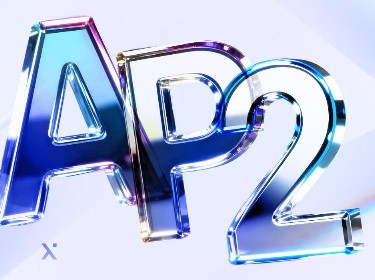Blockchain technology has taken the world by storm over the last few years. It has given businesses a new way of handling data and doing so securely. There is no doubt that in the next decade we will see blockchain continue to impact business operations.
Blockchain technology has made its presence felt in several industries, and the number of its cutting-edge use cases is growing by leaps and bounds. It’s forecasted that spending on blockchain solutions will reach almost $19 billion by 2024 and the total blockchain market size will grow to a whopping $39.7 billion in 2025.
There are effectively two types of blockchains – public and private. Each of these types has a different role to play in business. But how do you know which one will better suit your own organization’s purpose? Here we take a deep dive and compare the two concepts to help you decide between public and private blockchain.
What is public blockchain?
A public blockchain, as the name suggests, is a public portal. It means anyone can join: it is a shared network with no restrictions on participation. This was essentially the first kind of blockchain to make its presence felt in the shared network space. A public blockchain is ideal for you if you are looking for a completely decentralized system. For organizations exploring this model, working with a public blockchain development company helps ensure the right balance between decentralization and security from the outset.
On the flip side, it does become a challenge to incorporate public blockchain in the enterprise blockchain network: having said that, there is certainly plenty in its favor, as we will see in more detail below, including the granting of equal rights to every participant and the security issue.
Benefits of public blockchain
![]()
Here are some of the advantages that public blockchain has over the private variety.
Maximum security
Each platform that is part of the public blockchain is designed to operate with maximum security. Too often, shared networks are victims of online hacking attacks, which is why public blockchains work hard to maintain a high standard of security protocols.
Open for everyone
One of the key assets of a public blockchain is its open environment. Anyone, regardless of location and type of device, can log into the system, because all you need is just a stable and reliable Internet connection. Since it is open to everyone without restrictions, you can use this environment to reap the blockchain technology benefits in a completely secure and reliable portal.
Anonymous nature
One of the reasons the public blockchain has won over so many enthusiasts is because of its anonymous nature. Yes, it is a secure open platform where you can make transactions properly and efficiently, but at the same time, you are not required to reveal your real name or your identity in order to participate. If your identity is securely protected, no one can track your activities on the network.
No regulations required
There are no specific rules for the public blockchain regarding network server usage. You can create this platform without any limitations. This is ideal for consumer platforms where the blockchain is not limited to internal networking.
Truly decentralized
For all public blockchain companies, true decentralization is one of the core attractions. This feature is usually absent in the private blockchain domain. There is no single central platform that maintains the network: instead, it operates as a distributed system where every user has a copy of the ledger. Maintenance activities are performed from different nodes and the ledger is updated on a consensual basis.
Complete transparency
There is nothing to beat full transparency in any shared network system. The policy here is simple: if you have a copy of the ledger, public blockchain companies will make the system completely visible to others. As a user, you will have full access to the ledger at any given time. This does away with discrepancies or grey areas and eliminates any chances of corruption within the network.
See how our blockchain consultants helped the client deliver a top-notch logistics and transportation solution
Immutability
The public blockchain is immutable. What does it mean? Basically, this refers to the idea that once blocks are created and inserted into the chain, there is no way to alter, modify, or delete them. This makes it impossible for anyone to manipulate the network. If any user wants to change the block, they will have to start a new separate chain.
Complete power to user
In any other network chain, users are bound by a number of protocols, rules, and regulations. The situation is quite different in a public blockchain. Since there is no central authority maintaining the network, users are given complete freedom to work with the system and contribute their ideas.
Disadvantages of public blockchain
As well as their pros, public blockchains also have their share of cons. For instance, the fact that they are unregulated means they are not suitable for use in any internal system. In other words, they are difficult to use for projects that have strict criteria to follow. What’s more, their anonymous nature can make them vulnerable to infiltration by those who wish to use the network for illegal activities.
Public blockchain examples
![]()
Let’s dive into some of the public blockchain examples available in the current market.
Bitcoin blockchain
When it comes to the public blockchain, perhaps the best-known technology to make use of it is Bitcoin. This was unleashed in 2009 by the pioneer of blockchain technology, Satoshi Nakamoto. The original version had limited capabilities: users could only transfer funds from one wallet to another. Over the years, the Bitcoin blockchain has expanded its functions, resulting in a solution that allows fast and secure financial transactions.
Ethereum network
Another prime example of a public blockchain is the Ethereum network, a relatively recent addition to the blockchain domain, starting life in 2013. Its founder, Vitalik Buterin, successfully identified the shortcomings of the Bitcoin network and, together with his team, aimed to develop a robust solution. They successfully designed a landscape that could deploy smart contracts on a decentralized platform. This proved to be a trailblazer in blockchain technology and was later adapted in various ways to create smarter contract-friendly blockchains.
Check out Echo —a high-performing blockchain ecosystem & smart contract protocol
Litecoin
As of November 26, 2021, Litecoin’s market capitalization was $13.478 billion, making it one of the top ten cryptocurrencies. Litecoin is available to the public, and users can transfer the currency from one account to another, just as they can with a bank’s online system or PayPal. The transactions are carried out in Litecoin units.
Launched in 2011, the Litecoin network has the capacity to process a single block every 150 seconds. This makes it faster than Bitcoin, which takes an average of 600 seconds to process a block.
What is private blockchain?
A private blockchain is mainly used for developing internal networking within a limited group of users. It differs from its public counterpart in its mode of management. It is usually managed by a centralized system, with a network administrator sitting at the head of the network. To utilize this type of blockchain, users need permission to join the network.
The main idea here is that a central entity controls how the blockchain operates or functions. This means dependence on third-party systems to run the show. Also, only the specific users who have access to the blockchain and are involved in the transaction would see what is happening. These private transactions cannot be accessed by any other participant in the blockchain.
Benefits of private blockchain
![]()
Private blockchain has a more restricted audience but still has its own set of useful features.
Fast speed and higher efficiency
Public blockchains allow all users to take part in the network: this compromises their efficiency and speed. On the other hand, a private blockchain uses as many resources as required and thus is faster and more efficient.
Complete privacy
Network sharing at the enterprise level often requires an increased level of privacy for data confidentiality reasons. If this is one of your requirements, then a private blockchain is your best choice.
Empowering organizations
Private blockchain development is usually aimed at empowering businesses rather than individuals. Every organization or enterprise relies on a strong network to support its processes. Since private blockchains have a smaller network initially, there are fewer participants. This makes it easier to manage their ecosystem with less downtime and optimal maximum uptime.
Balanced and stable
Private blockchains are definitely a more stable network option due to the fact that only a handful of users have access to certain transactions. And since the nodes are allocated to each user group, they provide high stability for the users to work on the network. Private blockchains use fewer nodes than public ones, which significantly improves their performance and simplifies transactions.
Compliance
Compliance is obviously very important in any industry. Any technology lacking strict compliance protocols is going to hit trouble at some point. Private blockchains follow and incorporate all the compliance requirements into their ecosystem to make the transactions seamless and easy.
Speed
Private blockchains can process a higher number of transactions per second since only a few users are authorized to participate. This reduces the time needed to reach a consensus.
Scalability
Together with professional blockchain developers, you can scale your private blockchain based on your requirements. Since only a few nodes can control the network, a centralized system supports faster processes and simplifies decision-making.
Completely legal activity
Private blockchains are reliably protected from illegal activities. This is primarily due to the fact that access to this network is limited and requires a rigorous authentication process to enter it. This means that any criminal intrusion into the network can be filtered out. For a corporate environment, this feature is all the more valuable. Since only verified users are inside the system, the likelihood of criminal activity is reduced.
See how our blockchain consulting services can splash away your challenges
Disadvantages of private blockchain
On the downside, the centralized system often encourages an over-reliance on third-party management systems and tends to fall back on the same few industry players.
Private blockchain examples
Let’s dive into some examples of private blockchain currently available: Hyperledger, R3 Corda, and Quorum.
Hyperledger
Hyperledger is software that can provide customized blockchain technology services. Its focus is on trust and accountability amongst all shareholders in the company. This blockchain has a fixed set of regulations and every unit has a predefined rule. It promotes permissioned transactions, with each user having the necessary permissions and verifications to participate in the network.
Within Hyperledger there are a number of different frameworks such as Hyperledger Fabric, Hyperledger Grid, Hyperledger Sawtooth, Hyperledger Indy, and Hyperledger Burrow. There are also the tools Hyperledger Caliper, Hyperledger Ursa, Hyperledger Quilt, Hyperledger Composer, Hyperledger Explorer, and Hyperledger Cello.
Check out this Hyperledger-based solution for multi-signature document flow management
R3 Corda
Since its inception in 2014, R3 Corda has established itself as a force to be reckoned within the blockchain technology world. It functions in a unique way: it is based on a “state object” with the consensus being reached at the transaction level, rather than at the level of the whole ledger. Therefore transactions don’t need to be approved by every node in the network.
Quorum
Quorum, which leverages the Ethereum private blockchain, is a sought-after open-source network. Thanks to its privacy-centric features, it is suitable for large enterprises. It operates with the help of voting rights for every unit, via smart contracts. Each transaction is processed on a vote-by-vote basis, requiring a majority, not unanimity.
Public and private blockchain compared
![]()
Now that we have covered the fundamentals of public and private blockchain for you, it’s time to see which one suits your particular set of requirements.
Control
When it comes to authority, public and private blockchains vary in their mode of operation. The public blockchain is more of a decentralized system, where there is no one authority monitoring the network. Power is well distributed across all the user groups. But in the private blockchain, power is only partially decentralized. There is one single authority sitting at the head of the network and managing everything within the system.
Who can access
Private and public blockchains differ hugely when it comes to access. The public version is more suited for open-source platforms, where there are not too many restrictions involved. It’s open to all, and every user can check the ledger at will and take part in the decision-making process. On the other hand, the private blockchain has limitations on access. It is reserved for people authorized to enter the network, and it is not open to the public.
Transaction charges
Public blockchains do tend to empty users’ pockets. Resources are not allocated based on the number of users. The excess number of nodes on the network significantly slows down performances in the network. As a result, it takes more time to process transactions, thereby raising the cost. On the other hand, the private blockchain has a fixed number of resources for the user groups, and an increase in the number of transactions does not lead to more expensive processes.
Consensus
If you are looking to get full consensus, the public blockchain will usually be the best solution for you and your enterprise. Every user has equal rights when it comes to the network, its nodes, and permissions. Hence every user joining the network can access the ledger and contribute their opinion consensually. Conversely, the private blockchain works differently, with the central authority deciding who can join in.
Speed of transaction
Transaction speed is an important issue when it comes to the debate around private vs. public blockchains. For the former, only certain nodes can take part in a transaction. This means the resources do not get too tight, maintaining constant transaction speed.
On the other hand, if you work with public blockchains, there is no limit to the number of nodes. If users request too many transactions, the process might become slow. However, initially, both networks operate at the same speed efficiency.
Data control
You will find differences in terms of data handling capabilities. With a public blockchain, you have all the options to read and write on the common ledger. But once it is written and documented, there is no way to undo that action or alter it. In private blockchains, only the single governing entity can write on the ledger, and with just a limited set of nodes.
System efficiency
In terms of system efficiency, there are significant differences between public and private blockchains. Private versions are a lot more stable since they work with limited nodes and transactions. In the public blockchain, since all the nodes are available to all the users, the number of processes can increase, slowing down the whole network and hampering the efficiency of the system.
Immutability
Immutability goes a long way towards determining the security and authenticity of the blockchain. Although its open nature might seem to make a public blockchain less safe, it is also a strength. Once the blocks have been written onto or inserted into the chain, there is no going back. Data breaches and manipulation are less likely to occur. The private blockchain, though, is only partially immutable. The central authority sometimes does have the right to add or remove blocks from the chain as per requirements.
Let’s sum up the blockchain differences in a comparison table.
| Public blockchain | Private blockchain | |
| Access | Public and accessible to everyone | Permissioned blockchain, entry by invitation |
| Centralization | Decentralized | Can be centralized |
| Native token | Yes | Not necessary |
| Speed | Slow | Fast |
| Transactions per second | Less | More |
| Security | Highly secure for decentralization and higher nodes | Less secure since it is prone to data breaches |
| Energy consumption | High | Low |
| Attacks | High risk of potential collisions | No chance of minor collision |
Get more insights into this blockchain-powered fitness app that helps users stay motivated and commit to their workouts
Conclusion: which one is better?
Public and private blockchains each have their own set of distinguishing features, as well as their own pros and cons. What will suit you best will depend primarily on the application and its purpose.
If your enterprise is looking for a genuinely decentralized, completely transparent, immutable system to work with larger communities, then a public blockchain will be your preferred option. If cost-efficiency, speed, security, confidential information, transaction fees, and compliance are your company’s main priorities, then a private blockchain is the way to go.
Public and private blockchain technologies are continually evolving and addressing their shortcomings. That’s why it can be difficult to choose the right solution, or indeed to develop your own blockchain-based platform.
Here at PixelPlex, we can advise you on all aspects of each blockchain type and help you create a custom blockchain-powered solution that will truly work for you. By the end, you should have a blockchain system that is transparent, scalable, secure, and efficient.




